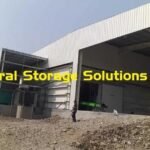In the world of business operations, particularly within industries such as hospitality, real estate, office management, and retail, the term FF&E is frequently used. But what exactly is FF&E in business, and why is it so important?
This article dives deep into the meaning, components, significance, and accounting aspects of FF&E (Furniture, Fixtures, and Equipment), along with practical examples and common considerations in various sectors.
Understanding FF&E in Business
What Does FF&E Stand For?
FF&E stands for Furniture, Fixtures, and Equipment. These are tangible, movable items used by a business in its daily operations that are not permanently attached to the building or structure. Since these items are not part of the real estate, they can be moved or replaced without causing damage to the property.
Components of FF&E

Furniture
Furniture includes all movable pieces that provide comfort, functionality, or aesthetic appeal. Common examples include:
- Desks and chairs
- Filing cabinets
- Sofas and tables
- Workstations and cubicles
These items are essential for setting up an operational and welcoming business environment.
Fixtures
Fixtures refer to items that are attached to the building but not permanently integrated. They are usually semi-permanent and may be removed or replaced with minimal effort. Examples include:
- Lighting fixtures
- Mounted whiteboards or bulletin boards
- Built-in shelving units
- Window coverings like blinds and curtains
Fixtures often blur the line between real estate and movable property, which is why their classification must be clearly defined in contracts or leases.
Equipment
Equipment refers to tools, machinery, and devices used to perform specific tasks essential to the business. These can include:
- Computers and printers
- POS (Point of Sale) systems
- Kitchen appliances (in a restaurant or hotel)
- Medical devices (in clinics and hospitals)
These items are critical to daily operations and often represent a significant portion of business investment.
Why FF&E Matters in Business
Importance in Accounting and Taxation
From a financial perspective, FF&E items are usually considered capital assets and are subject to depreciation over their useful life. This means businesses can deduct a portion of the cost of FF&E items each year on their taxes.
- Depreciation helps reduce taxable income
- Proper categorization ensures compliance with IRS rules
- FF&E depreciation schedules differ from real estate depreciation
Budgeting and Financial Planning
When starting or renovating a business, FF&E can constitute a large portion of the upfront costs. Therefore, it is essential to include FF&E in:
- Initial investment budgets
- Capital expenditure plans
- Project timelines
Ignoring or underestimating FF&E expenses can result in delays, budget overruns, or operational inefficiencies.
FF&E in Different Industries

FF&E in Hospitality
In hotels, resorts, and other lodging facilities, FF&E plays a central role in the guest experience and brand presentation.
- Beds, nightstands, and dressers in guest rooms
- Lobby furniture and decorative items
- Restaurant kitchen equipment and serving stations
Hospitality businesses often undergo periodic FF&E upgrades to remain competitive and maintain customer satisfaction.
FF&E in Retail
Retail stores rely on FF&E to enhance merchandising and customer flow. Examples include:
- Shelving units and display racks
- Checkout counters and signage
- Security systems and surveillance cameras
The right FF&E choices in retail can boost sales and improve store aesthetics.
FF&E in Offices
For office environments, FF&E supports employee productivity and organizational functionality.
- Ergonomic chairs and desks
- Conference room setups
- IT hardware like monitors and docking stations
Companies often invest in high-quality FF&E to attract talent and support a healthy work culture.
FF&E vs. Other Business Assets
FF&E vs. Real Property
Real property refers to land and anything permanently attached to it, like walls, roofs, or plumbing systems. FF&E, on the other hand, includes movable, operational assets. Knowing the difference is vital for:
- Lease agreements
- Asset appraisals
- Property sales and acquisitions
FF&E vs. Inventory
Inventory is made up of goods meant for sale to customers, while FF&E is used internally to run the business. For example, in a clothing store:
- Shirts on sale = Inventory
- Racks holding the shirts = FF&E
FF&E Accounting and Depreciation
How Depreciation Works
FF&E items usually lose value over time due to wear and tear. Businesses account for this loss through depreciation, typically using methods like:
- Straight-line depreciation
- Double declining balance
The depreciation period often depends on the asset type:
- Office furniture: 7 years
- Computers and tech: 5 years
- Machinery: 5–10 years
Proper tracking and documentation of FF&E depreciation is crucial during audits or tax filing.
FF&E Procurement and Planning
FF&E Procurement Process
- Needs assessment
- Vendor selection and bidding
- Quality checks and delivery schedules
- Installation and setup
In large projects, businesses may hire FF&E procurement specialists or consultants to handle this complex process.
FF&E Inventory Management
Once acquired, FF&E items need to be properly recorded and tracked. A typical FF&E inventory includes:
- Item descriptions
- Purchase date and cost
- Asset tag or serial number
- Location and condition
Maintaining an accurate FF&E inventory helps during insurance claims, audits, or business valuations.
FF&E and Lease Agreements

What Happens During Move-Out?
In commercial lease agreements, FF&E often becomes a point of negotiation. Key considerations include:
- Who owns the FF&E?
- Is the tenant allowed to remove all items?
- Will some fixtures be considered “leasehold improvements”?
Clarifying FF&E terms upfront can prevent disputes at the end of a lease
Conclusion
Understanding what FF&E is in business is essential for accounting, budgeting, asset management, and operational planning. Whether you’re setting up a new office, renovating a hotel, or launching a retail store, furniture, fixtures, and equipment are indispensable to your success.
By correctly classifying, budgeting for, and managing FF&E, businesses can maximize operational efficiency, reduce tax burdens, and maintain compliance with accounting standards.
In summary:
- FF&E = Furniture, Fixtures & Equipment
- Movable and non-permanent assets
- Critical for operations, tax planning, and budgeting
- Used across all major industries
- Must be depreciated and accounted for properly
Investing time in understanding and managing FF&E will always pay off—financially, legally, and operationally.
Disclaimer
This article is for informational purposes only and does not constitute legal, financial, or professional advice. Readers should consult with qualified professionals before making decisions related to FF&E or other business matters. The author and publisher are not liable for any actions taken based on this content.










